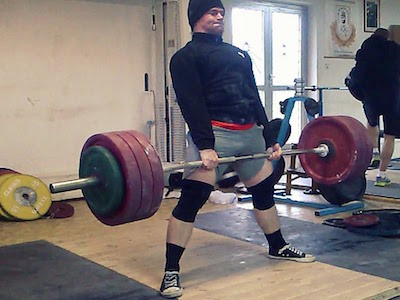Hand calluses are super common in the weightlifting world. While some weightlifters sport their “gym hands” with pride, others find the rough and hardened skin on their palms an unsightly nuisance.
If you do a lot of deadlifts, cleans, snatches and chins, the friction and pressure from gripping the bar can result in thick, hardened areas of the skin. Your skin does this to protect itself from further damage and possible infection.
As well-intentioned as your skin may be, the rough calluses and peeling skin can be extremely bothersome and distracting when you lift. Fortunately, you don’t need to put up with them if you don’t want to. If you’re a regular weightlifter, read on to discover how to prevent irritating hand calluses without disrupting your workouts.
Moisturize Regularly
Moisturization should be a key part of your regular skin care routine, especially if you struggle with dry skin. When your skin is dry, its protective barrier function is impaired, making it more susceptible to calluses that can crack or tear.
Keeping hands moisturized is essential to improving skin health and reducing friction between your hands and the bar. If you have coconut oil in your house, consider using it to hydrate and soothe the rough skin on your hands. According to a 2019 study published in the Journal of Traditional and Complementary Medicine, coconut oil has anti-inflammatory properties and several skin protective benefits that can keep hands healthy and strong.
Coconut oil can also be greasy, so you may want to apply it at night and avoid touching your face to prevent potential acne breakouts. During the day, consider keeping a nourishing lotion in your gym bag and apply it each time you wash your hands.
Adjust Your Weightlifting Technique
While calluses are a normal part of weightlifting, their size and severity can vary depending on how you grip the bar. Gripping the bar improperly can lead to larger calluses that are more prone to cracks and tearing.
Even advanced lifters don’t always hold the bar correctly. Although gripping the bar in your palms is more secure, the best position for most lifts is to hold the bar between the palm and the fingers along the knuckles. This reduces the potential pinching and friction from the bar that can result in painful calluses.
Wear Weightlifting Gloves
One of the easiest ways to prevent calluses is by investing in a good pair of weightlifting gloves. This type of glove covers the palms and some of the fingers, protecting hands against the friction from the bar.
Weightlifting gloves are somewhat controversial in the gym. While some lifters say that the extra material of the gloves hurts their performance, others say the benefits of weightlifting gloves outweigh the negatives.
For example, some people sweat so much in the gym that they struggle to grip the bar properly. Wearing gloves can actually help them achieve a better grip, all while protecting their hands from calluses.
Chalk Up
Using chalk in the gym can help you get a better grip on the bar by reducing the sweat on your hands. It’s also beneficial for quick, repetitive motions that can cause blisters and tears.
Apply chalk after each set to ensure that you get enough chalk to form a protective layer on your hands. The one caveat to using chalk is that it’s extremely drying to the hands. This can make your calluses prone to tearing if you don’t keep them well moisturized.
After your workout, be sure to wash your hands with a moisturizing soap, followed by an intense moisturizer. This will help counteract the drying effects of the chalk and keep calluses from becoming too rough and irritating.

Treatment Options for Hand Calluses
Whatever you do, never pick at your calluses. This can expose a raw and painful wound underneath, putting you at risk of infection. Instead, consider the following methods for treating hand calluses:
- Soak Your Hands Daily—Place your hands in a bowl of warm water and let them soak for 15-20 minutes. This will soften the calluses and make the dead skin fall off easier. Follow this up with hand lotion to seal in the moisture.
- File Them Down—Even lifters who believe calluses are a good thing know better than to allow the dead skin to pile up too much. Filing down your calluses will help keep them smooth and allow you to grip the bar more effectively. You can use a file made specifically for hand calluses or use a pumice stone to shave down the rough skin.
- Apply Salicylic Acid—You may already be familiar with salicylic acid from your acne products. With its powerful exfoliating abilities, salicylic acid can soften the calluses on your hands for easier removal. In a 2011 study published in the Journal of Dermatology, researchers used a 30 percent salicylic acid solution and found that it was both a safe and effective treatment for calluses and corns. To avoid damaging the surrounding tissue, consult your doctor before applying salicylic acid.
- Treat Torn Calluses ASAP—If your callus rips, stop working out immediately. Soak the area in warm water and try to gently clean it with soap. Then, trim away any hanging skin that is in danger of further ripping and cover the wound with a breathable bandage. This will help reduce the risk of infection while speeding up the healing process.
Final Thoughts
While some gym enthusiasts believe that calluses are the price one must pay to lift weights, this isn’t necessarily true. There are several effective ways to prevent and treat gym hands so that they aren’t such an annoying distraction in the gym.
If your calluses are still bothersome after a few weeks of trying these methods, it may be time to see a dermatologist. They can shave down the callus safely using a surgical blade or apply a spot treatment of salicylic acid to loosen the dead and hardened skin.
